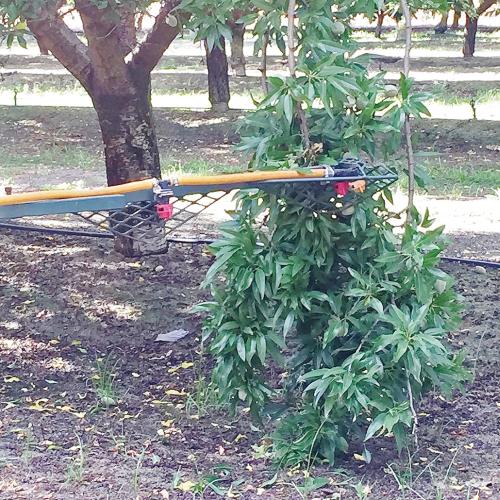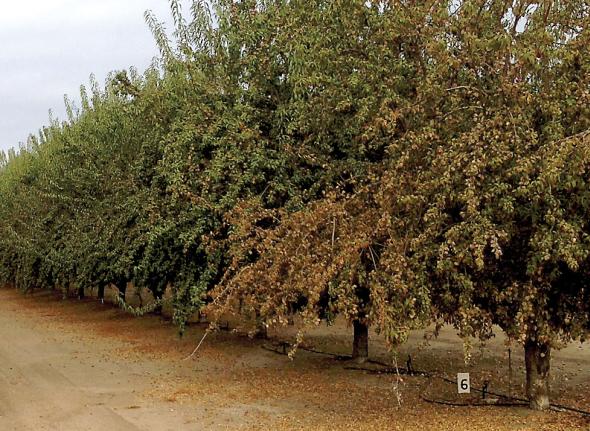Minor Variations Are The X-Factor In Spray Applications

Wes Asai
When you look at the logistics of herbicide applications, it is amazing to see how even the smallest deviations from the norm can make substantial differences. It is not uncommon to see herbicide phytotoxicity symptoms in the orchard such as mottled leaves, leaf burn or defoliation, or in the most extreme cases, tree death.
Though many of these injury cases can be attributed to contact damage from drift, there are many instances of injury from root uptake, especially in light of the development of several new herbicides that have use rates of a mere 1 ounce per acre or less.
It is understandable how trees can be damaged if there is incorrect calibration, an overdose above the maximum label rate, or the use of a product not labeled for that crop. What is surprising though is when the equipment is calibrated and functioning properly, tree injury symptoms still show.

Photo 1: Spray boom is held in one position from low hanging limb. (Photo credit: Wes Asai)
Minor Changes Can Have A Big Impact
I have done some calculations to illustrate the significance of minor deviations from normal ground speed to illustrate the magnitude of these changes. In this exercise, we will assume the grower is applying herbicides with XR8003 flat fan nozzles at 30 PSI, at a ground speed of 2.5 miles per hour.
- Example 1: The driver slows down by just ½ mile per hour to avoid a low hanging limb or to make a turn. He has just increased the active ingredient per treated acre (active ingredient, or A.I., per acre) by 20%.
- Example 2: The ranch has many low hangers that hook the spray boom and cause the break-away arm to constantly spray in one 6 inch spot by the trunk for just 1 second. That spot just got a 7.4 times increase in A.I. per acre. See photo 1.
- Example 3: The driver gets to the end of the row and comes to a stop for just 2 seconds before he turns off the valve to the boom. That treated area just got an A.I. peracre 14.8 times greater than the rest of the orchard. If he then proceeds to make the turn, comes to a stop, opens the valve for 2 seconds before starting the tractor in motion, the other half of that end tree just received another 14.8 times concentration of A.I. per acre in the sprayed spot. This is why symptoms such as shown in photo 2 are common on end trees.
New Herbicides Are Very Concentrated
Many of the recently registered new herbicides are so concentrated that their label rates per acre can be as little as 1 ounce. This means even slight variations in application rates can produce significant toxic effects on the tree. This is further accentuated when the applications are on coarse-textured sandy soils.

Photo 2: This tree at the end of the row received higher rate of herbicide. (Photo credit: Wes Asai)
In these instances, the excess A.I per acre can move with irrigations into the root zone and cause injury from root uptake.
Sometimes another example of an application error will affect the end trees.
This is when the leftover product in the tank is sprayed out perpendicular along the row ends to leave a clean strip along the orchard border. These end trees which already have the correct A.I. per acre just received additional material above the calibrated rate.










